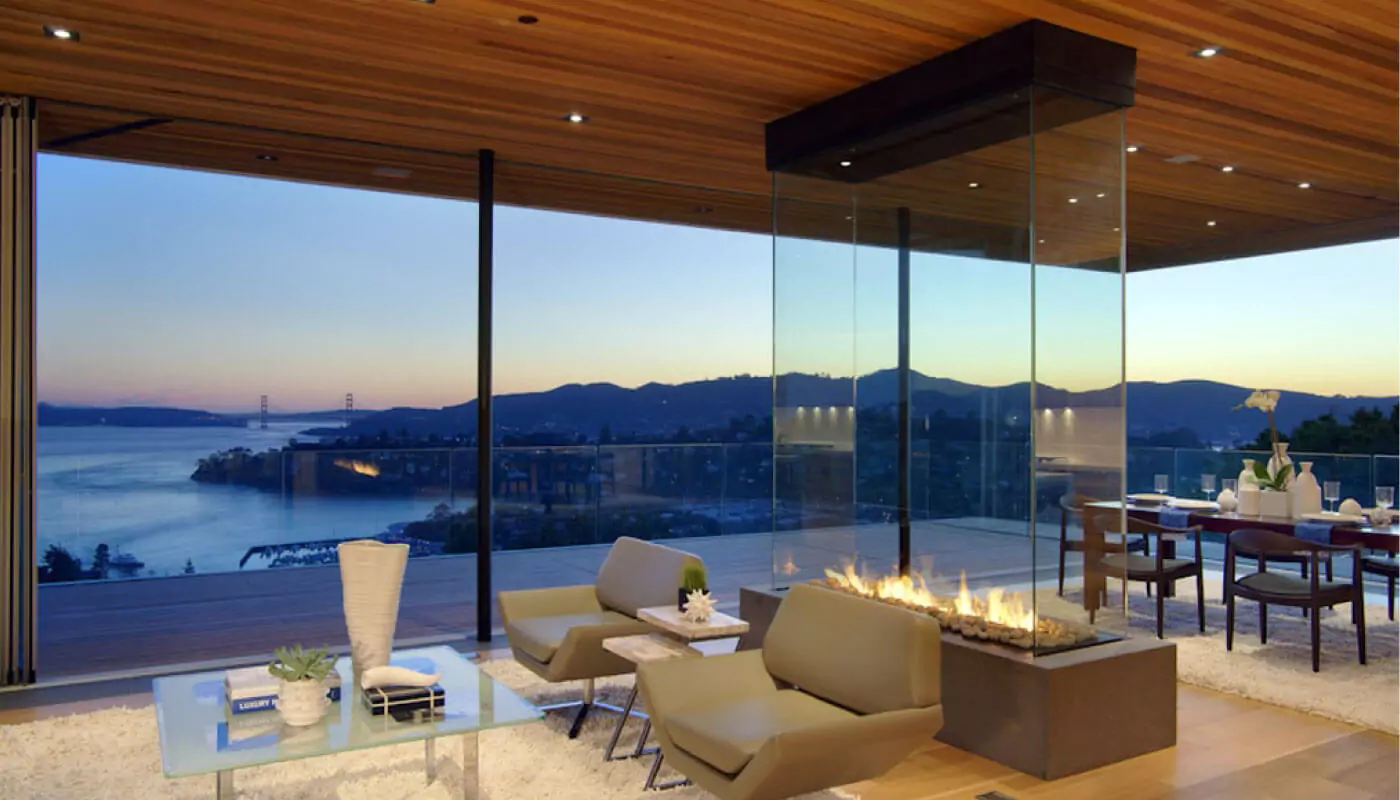
Understanding Traditional Gas Fireplaces
Traditional gas fireplaces are designed to replicate the classic aesthetic of a wood-burning fireplace. These units typically use indoor air for combustion and expel exhaust gases through a vertical flue or chimney.
How They Work
These fireplaces operate using a B-vent system that channels gases out of the home through a vertical flue. They draw air from the room, which may affect indoor airflow.
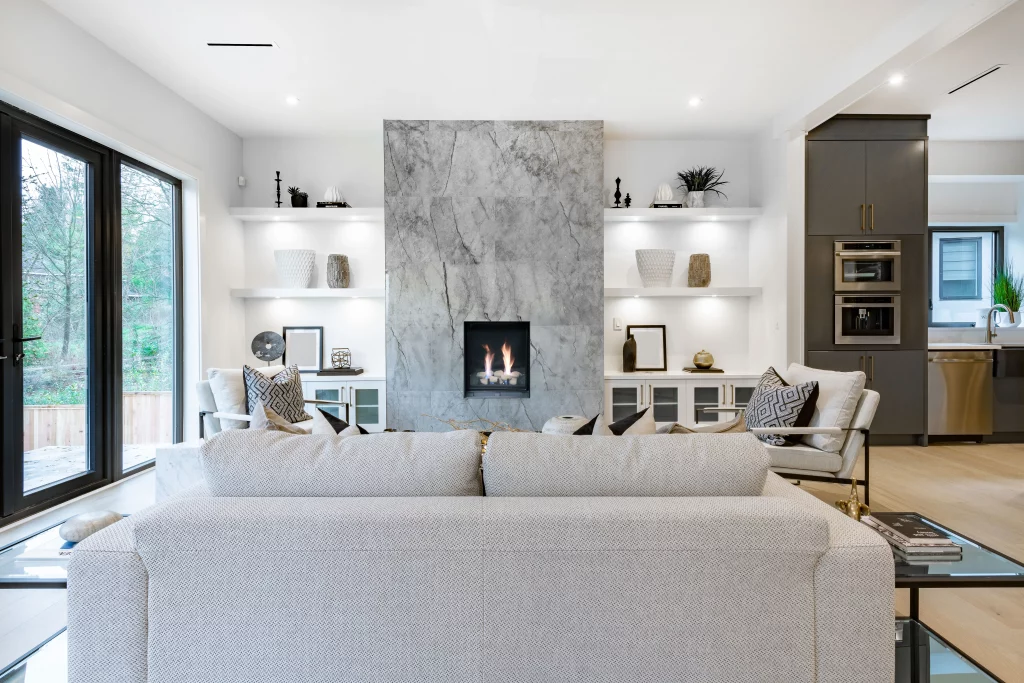
What Is a Direct Vent Gas Fireplace?
A direct vent fireplace is a sealed system. It uses air from outside for combustion and has a dedicated channel to expel exhaust outdoors.
Key System Design
Direct vent fireplaces feature a sealed glass front and a coaxial vent system. One pipe draws in outdoor air while another vents combustion gases. This separation from indoor air supports consistent performance and air quality.
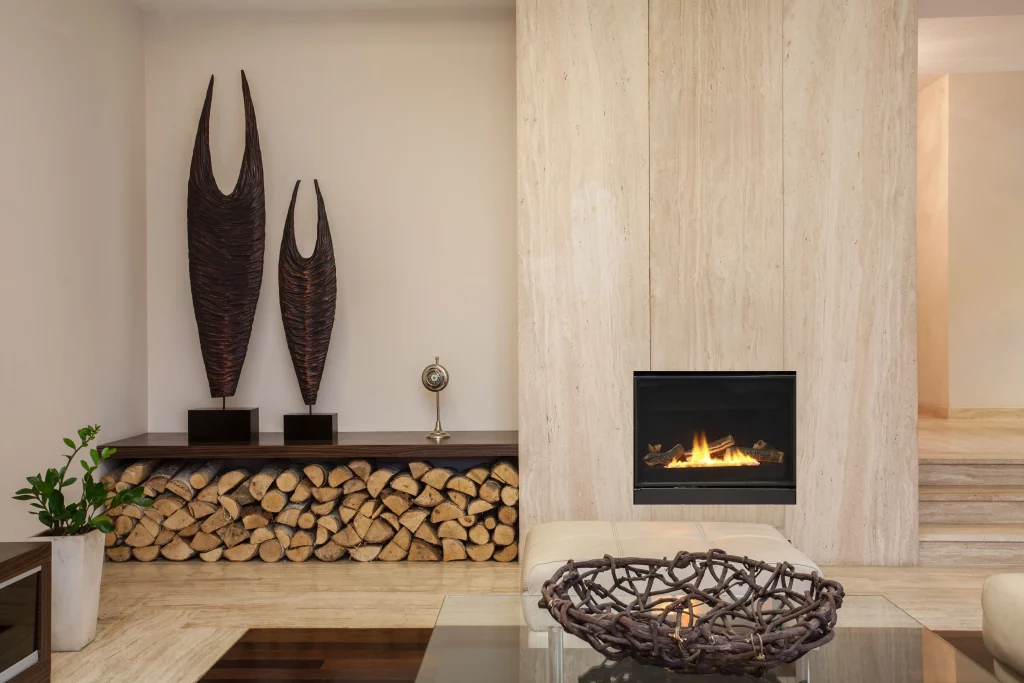
Key Differences at a Glance
| Feature | Direct Vent Fireplaces | Traditional Gas Fireplaces |
| Venting Direction | Horizontal or vertical | Typically vertical (chimney required) |
| Installation Flexibility | More versatile (no chimney needed) | Requires a vertical flue or chimney |
| Air Quality Impact | Maintains indoor air separation | May affect room airflow |
Installation Options and Design Considerations
Direct Vent Fireplaces
Because they do not need a traditional chimney, direct vent fireplaces offer more freedom in placement. Whether it’s a wall-mounted unit or a custom-built centerpiece, these fireplaces are compatible with a variety of spaces.
Traditional Gas Fireplaces
These typically require a power vented flue system, which may limit where the unit can be installed. This makes them more suitable for new construction.
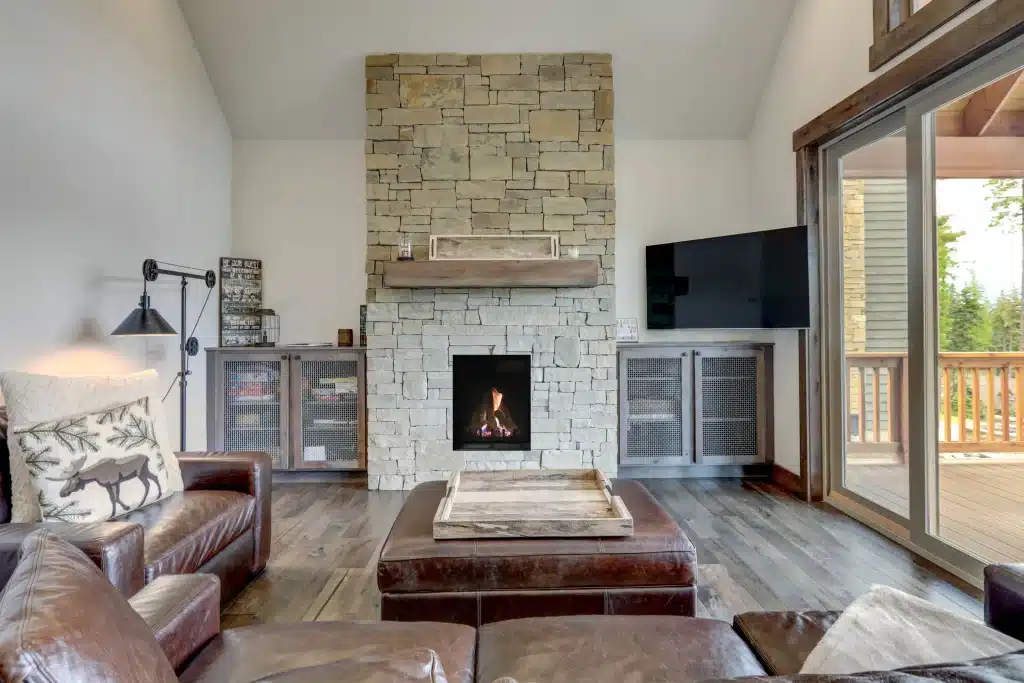
Which Option Is Safer for Your Home?
Sealed System Advantage
Direct vent fireplaces feature a sealed combustion chamber that helps keep indoor air separate from the combustion process. This reduces the risk of combustion gases entering the home.
Glass Safety Options
Many models come with safe-to-touch glass or optional glass cooling systems, which are ideal for homes with children or pets.
Which Fireplace Type Offers More Flexibility in Design?
Traditional Fireplaces
These are favored for their classic appearance and can blend well in traditional home styles. However, venting constraints may limit design freedom.
Direct Vent Fireplaces
Direct vent options come in a variety of shapes, sizes, and configurations such as linear, see-through, or multi-sided providing more freedom in architectural and interior design.
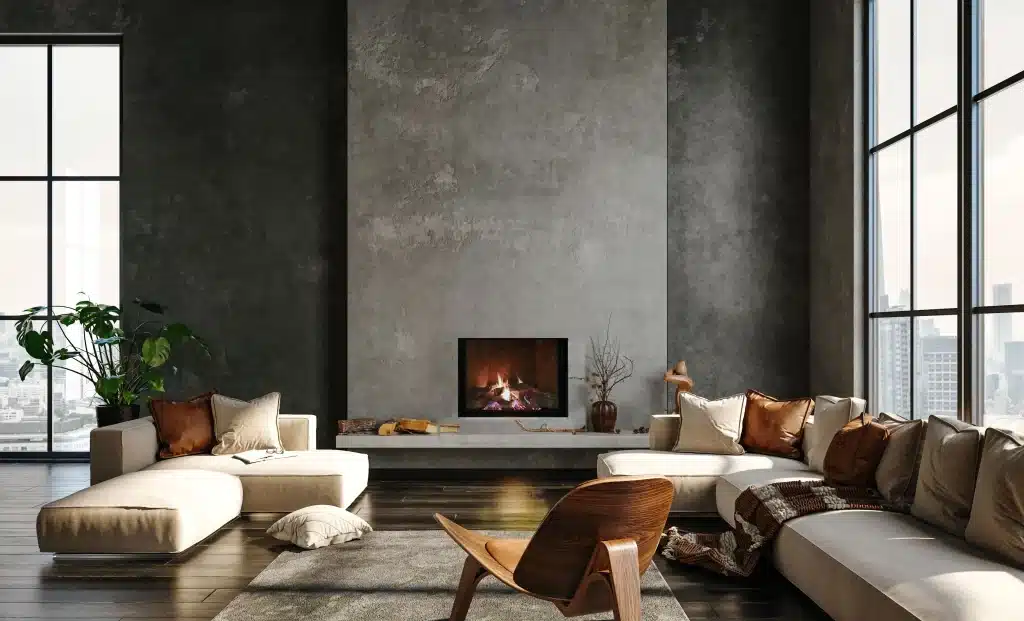
Acucraft’s Direct Vent Fireplace Collection
Acucraft’s Direct Vent Fireplaces are tailored for homeowners and builders seeking performance, safety, and bold visual appeal.
Customization Options Include:
- Linear or traditional viewing windows
- Frameless glass fronts
- Decorative media: glass, rocks, stones, or log sets
- Multiple trim and finish options
Final Thoughts
Both traditional and direct vent gas fireplaces have distinct advantages. If you’re prioritizing cleaner indoor air, flexible installation, and modern design options, direct vent gas fireplaces offer a compelling solution. At Acucraft, we build each fireplace to match your vision, offering unparalleled customization and dependable support.
